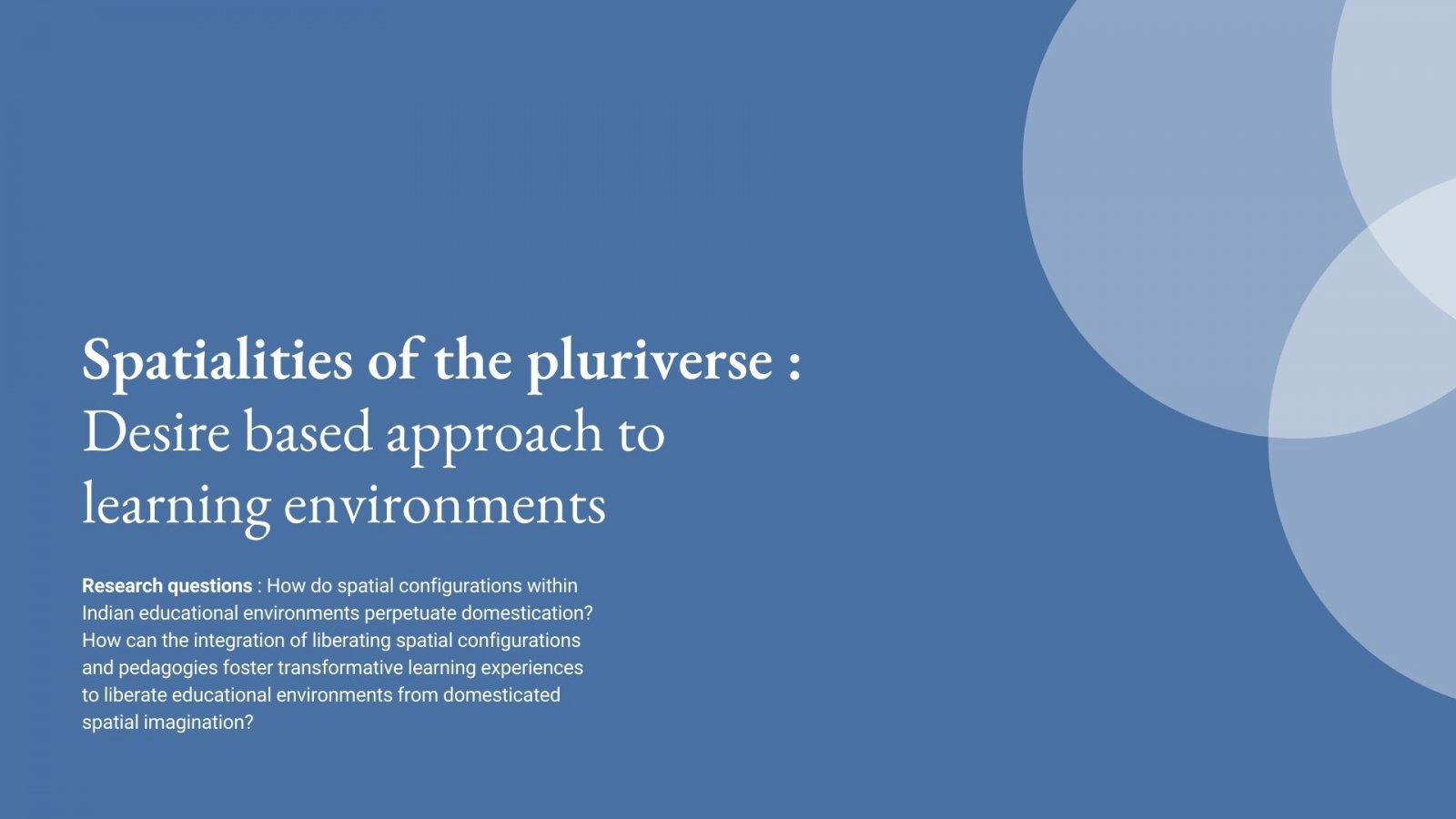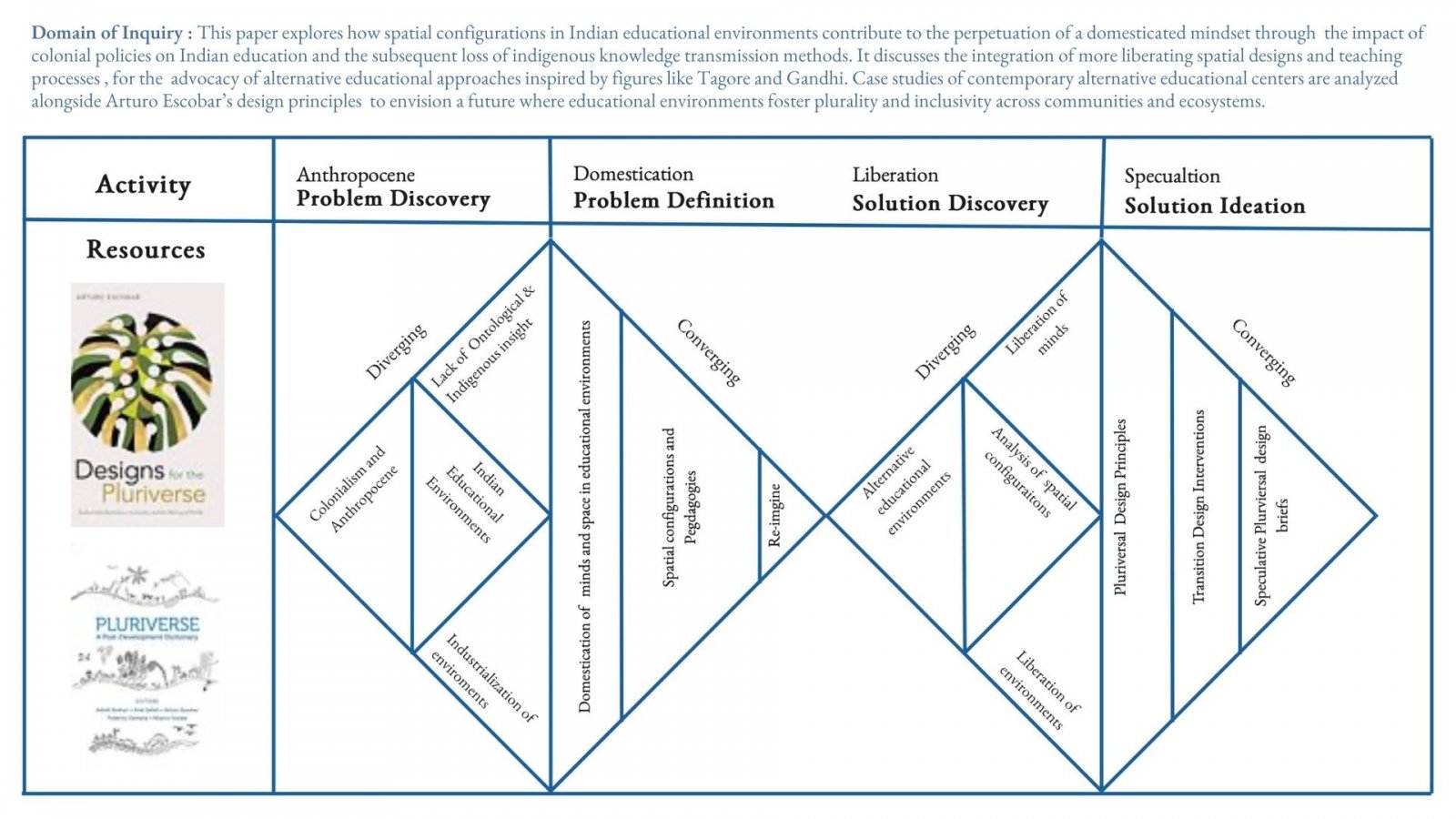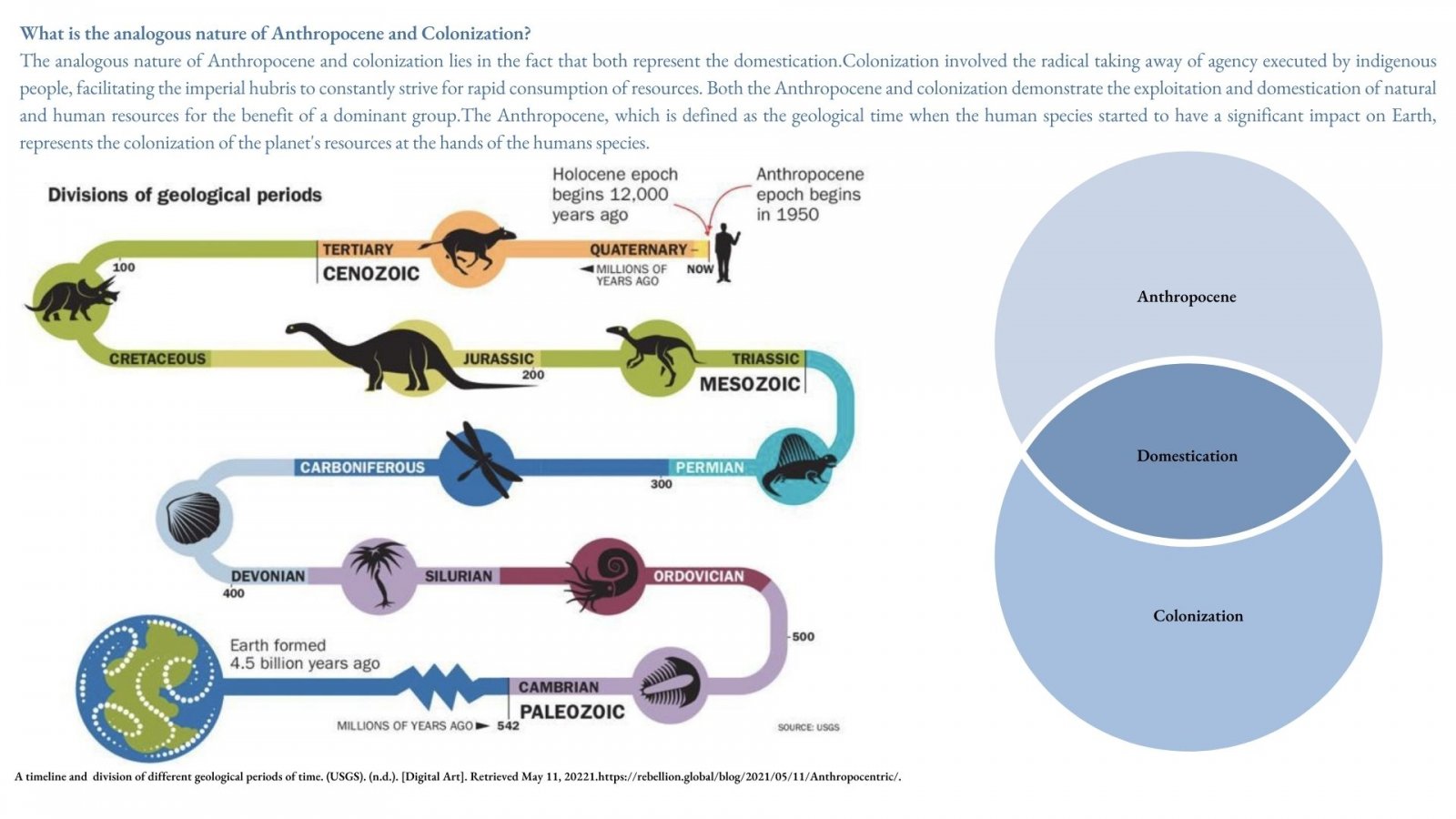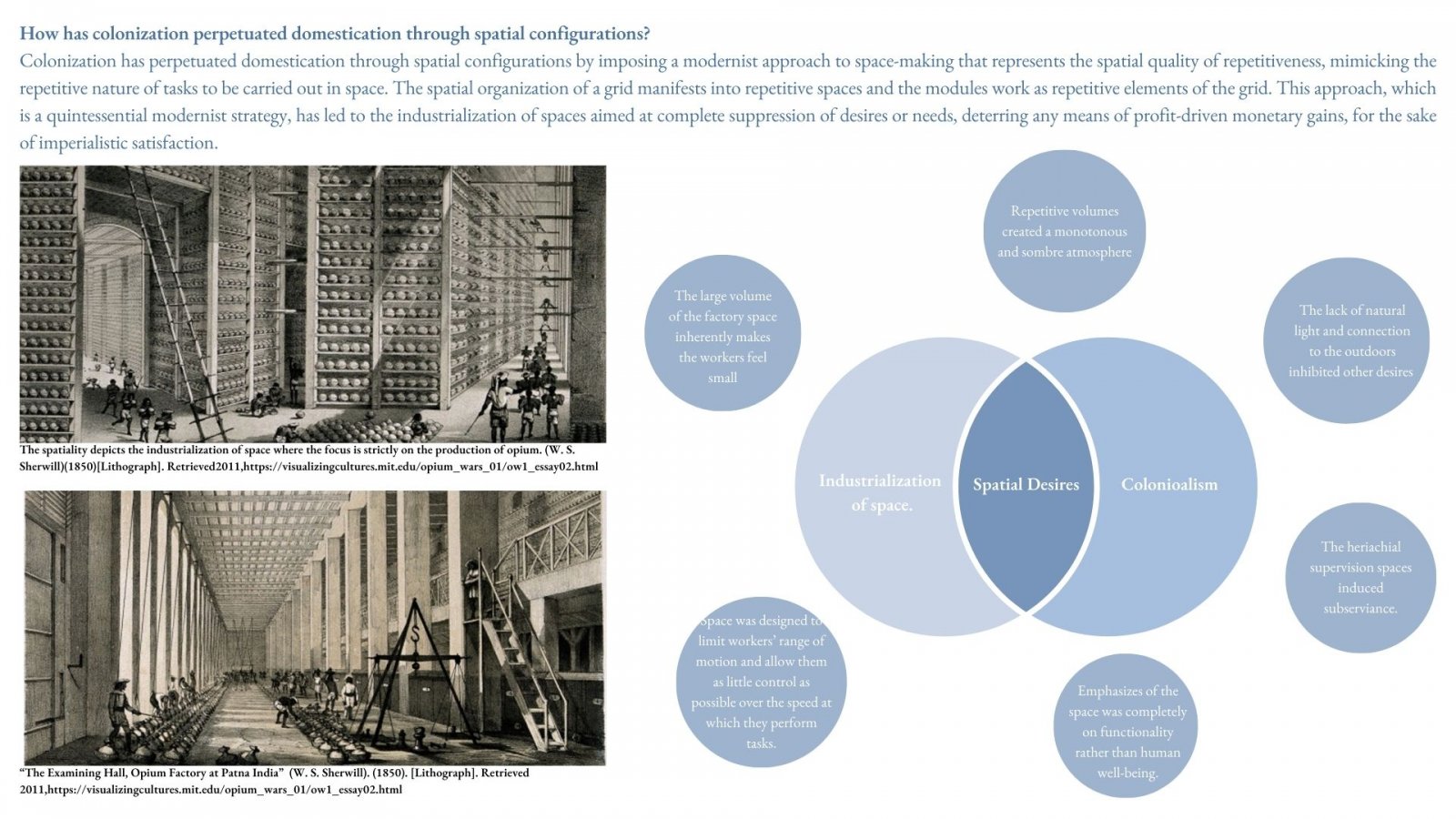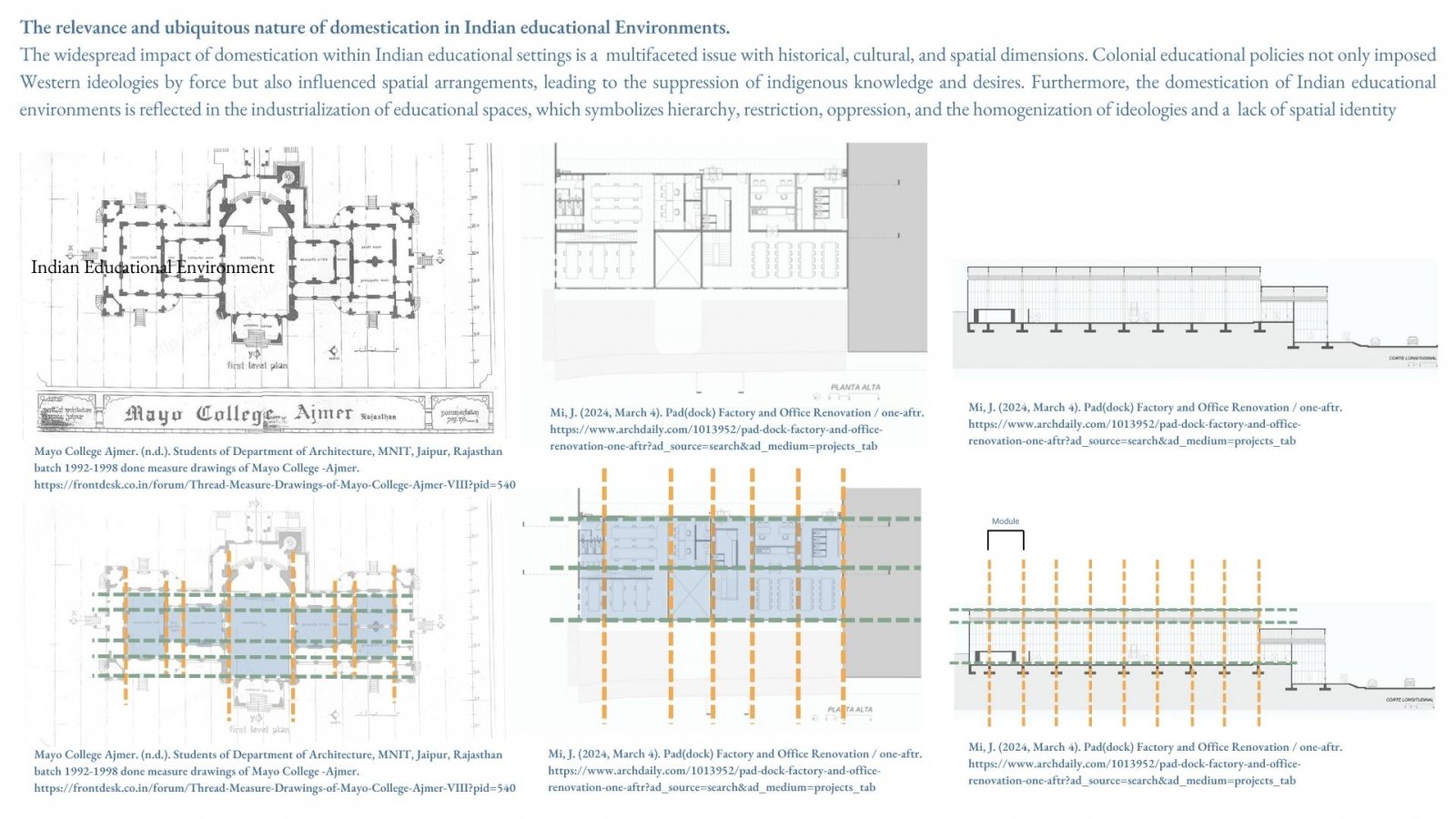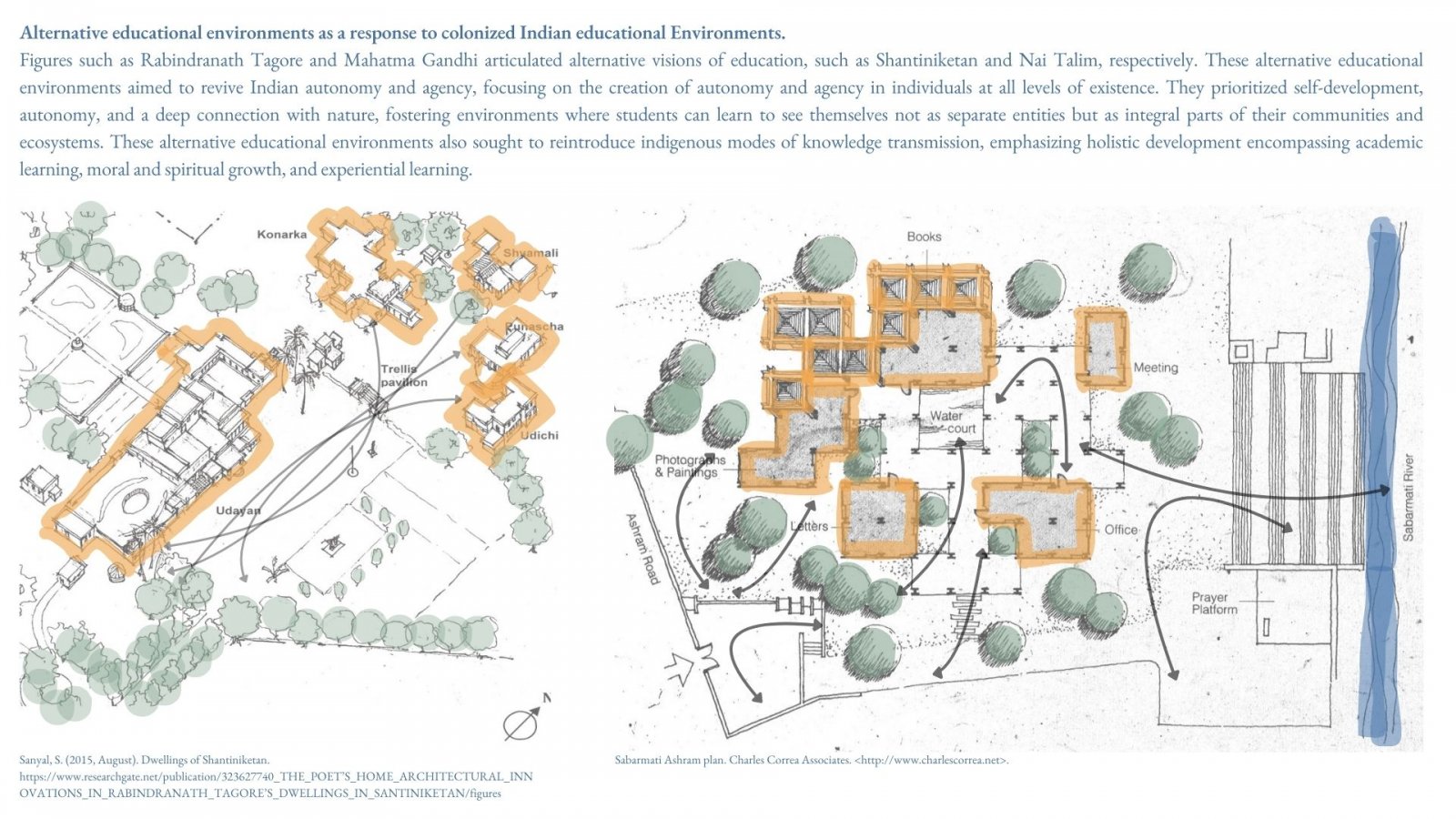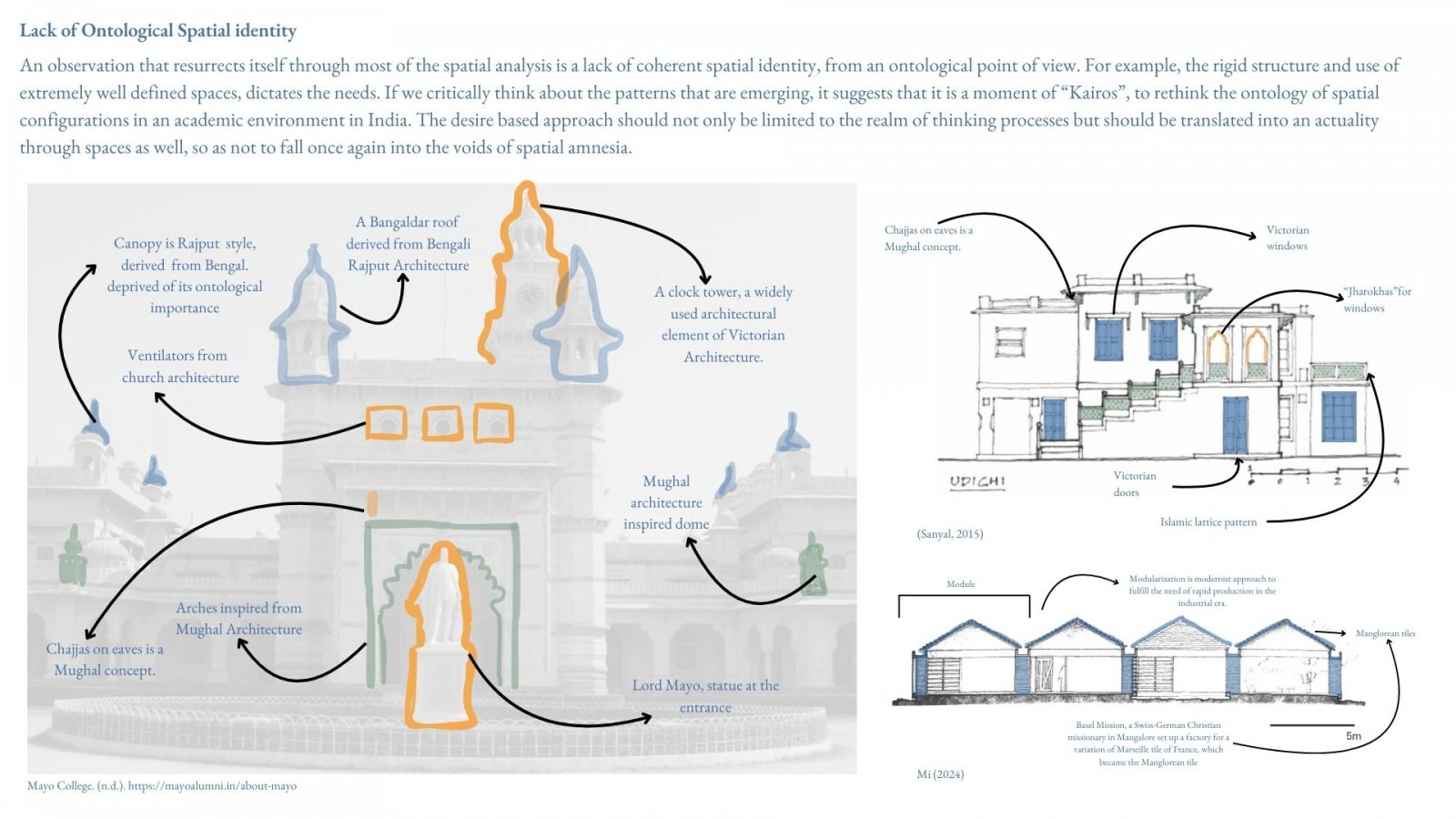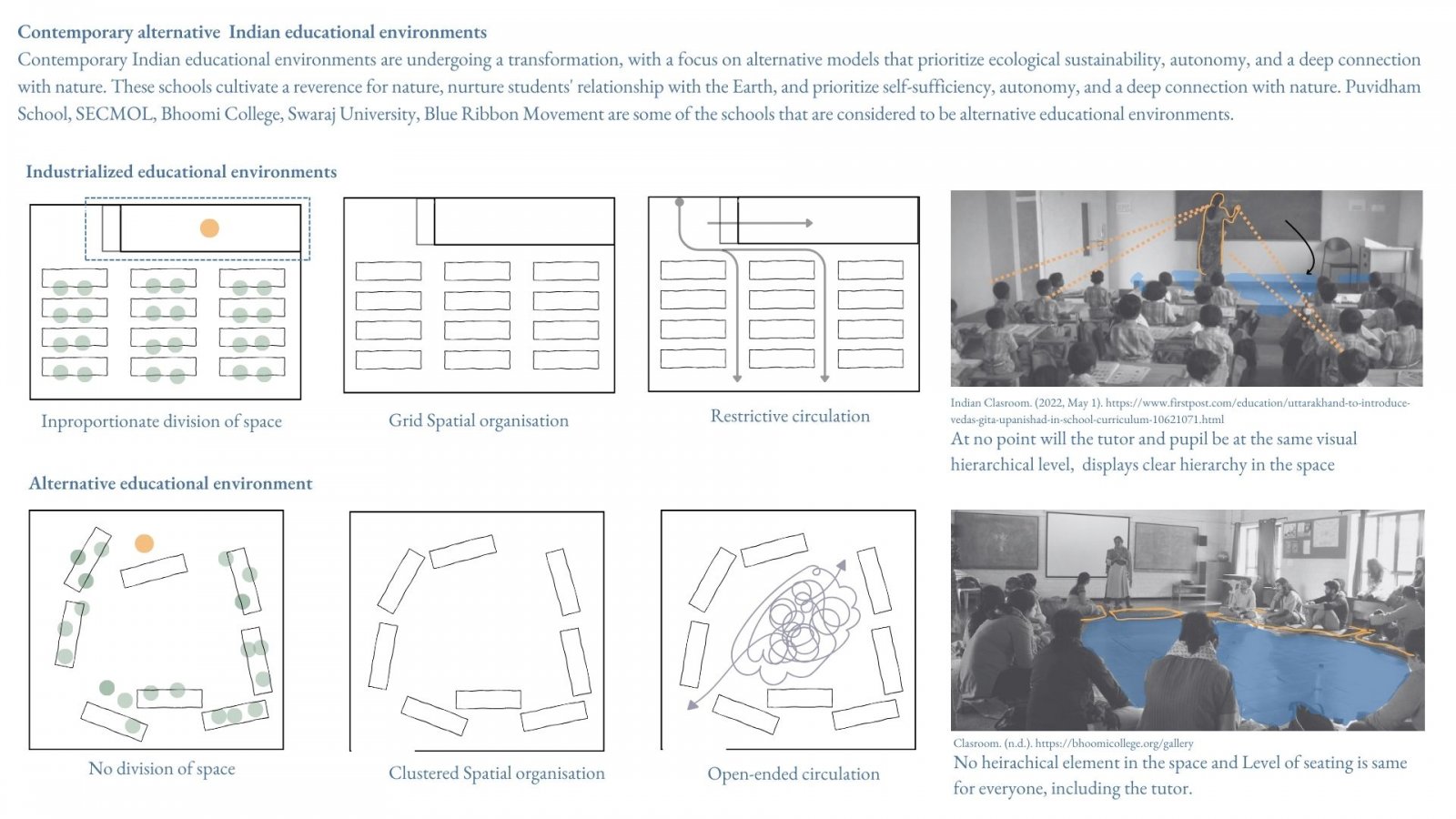Your browser is out-of-date!
For a richer surfing experience on our website, please update your browser. Update my browser now!
For a richer surfing experience on our website, please update your browser. Update my browser now!
The Anthropocene epoch overlaps with the narratives of colonialism and domestication, particularly in the context of India. This overlapping suggests how colonial policies and practices of educational systems have domesticated Indian mindsets not only through brute force but spatiality as well. This has led to the obliteration of indigenous models of knowledge transmission and indigenous spatial desires. As countermeasures to colonial models of education Rabindranath Tagore and Mohandas Gandhi articulated educational alternatives such as the Shantiniketan and Nai Talim, respectively. Building on the importance of these pre-cursory models of alternative education, the research paper explores case studies of alternative educational centers in contemporary India such as the Puvidham School, SECMOL, Bhoomi College, Swaraj University, and Blue Ribbon Movement. The design principles of Arturo Escobar’s Designs for the Pluriverse focus on autonomous and transitional design as a way of rethinking design processes. By incorporating these pluriversal design principles, in the realm of design through education and spatiality it allows the re-imagination of educational practices and environments in India. The findings of the study aim to unpack the potential outcomes in spatialities, pedagogies, and practices in educational environments to speculate and envision a different future, grounded in plurality of existence across communities and ecosystems.
